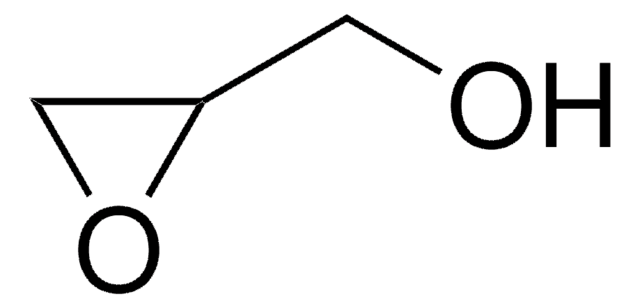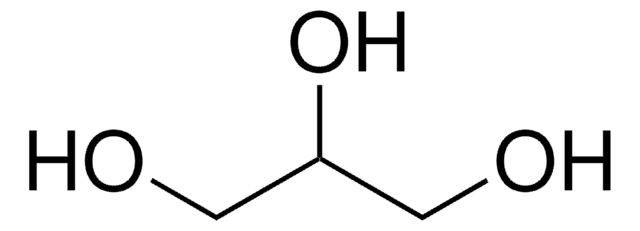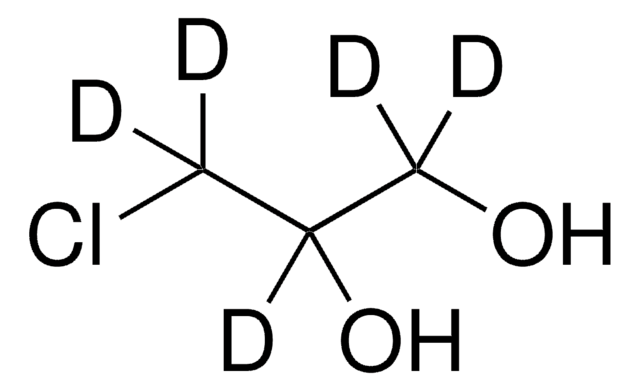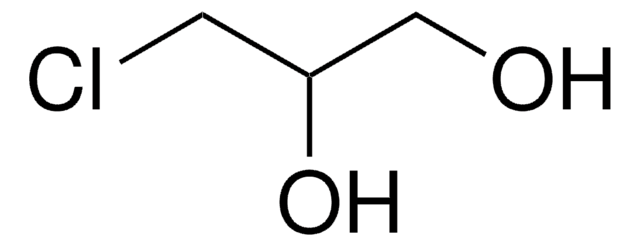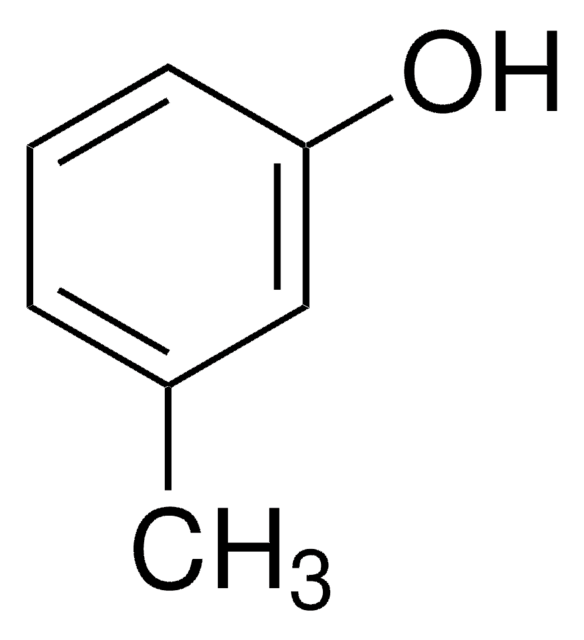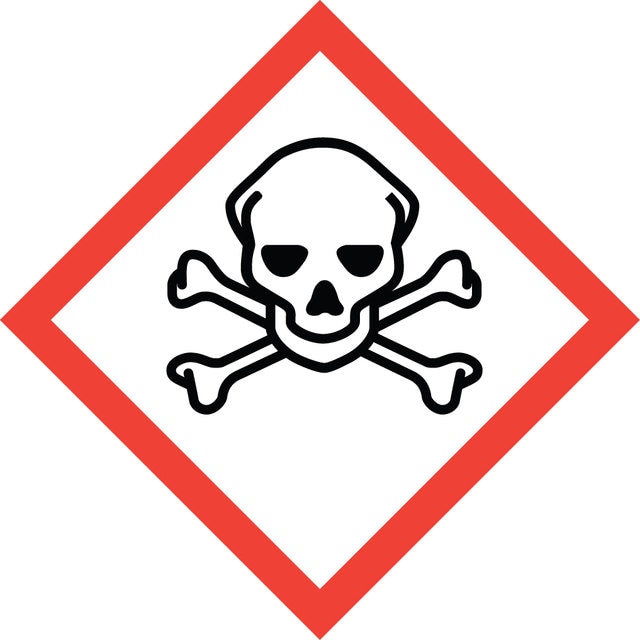추천 제품
Grade
analytical standard
Quality Level
vapor density
2.15 (vs air)
vapor pressure
0.9 mmHg ( 25 °C)
분석
≥95.0% (GC)
autoignition temp.
780 °F
유통기한
limited shelf life, expiry date on the label
기술
HPLC: suitable
gas chromatography (GC): suitable
refractive index
n20/D 1.429-1.437
n20/D 1.433 (lit.)
bp
61-62 °C/15 mmHg (lit.)
density
1.117 g/mL at 25 °C (lit.)
응용 분야
cleaning products
cosmetics
food and beverages
personal care
형식
neat
SMILES string
OCC1CO1
InChI
1S/C3H6O2/c4-1-3-2-5-3/h3-4H,1-2H2
InChI key
CTKINSOISVBQLD-UHFFFAOYSA-N
유사한 제품을 찾으십니까? 방문 제품 비교 안내
일반 설명
Glycidol is an aliphatic epoxide which may be used as a stabilizer in the manufacture of vinyl polymers, as an additive for oil and synthetic hydraulic fluids, and also as a diluent in some epoxy resins.
애플리케이션
Refer to the product′s Certificate of Analysis for more information on a suitable instrument technique. Contact Technical Service for further support.
신호어
Danger
Hazard Classifications
Acute Tox. 2 Inhalation - Acute Tox. 4 Dermal - Acute Tox. 4 Oral - Carc. 1B - Eye Irrit. 2 - Muta. 2 - Repr. 1B - Skin Irrit. 2 - STOT SE 3
표적 기관
Respiratory system
Storage Class Code
6.1A - Combustible acute toxic Cat. 1 and 2 / very toxic hazardous materials
WGK
WGK 3
Flash Point (°F)
161.6 °F
Flash Point (°C)
72 °C
이미 열람한 고객
Carcinogenicity of glycidol in F344 rats and B6C3F1 mice.
Irwin RD, et al.
Journal of Applied Toxicology, 16(3), 201-209 (1996)
NTP Toxicology and Carcinogenesis Studies of Glycidol (CAS No. 556-52-5) In F344/N Rats and B6C3F1 Mice (Gavage Studies).
National Toxicology Program and others
National Toxicology Program Technical Report Series, 374(3), 1-1 (1990)
Glycidol.
IARC monographs on the evaluation of carcinogenic risks to humans, 77, 469-486 (2000-12-02)
Hirotoshi Akane et al.
Journal of applied toxicology : JAT, 34(12), 1389-1399 (2014-01-08)
We previously found that exposure to glycidol at 1000 ppm in drinking water caused axonopathy in maternal rats and aberrations in late-stage hippocampal neurogenesis, targeting the process of neurite extension in offspring. To identify the profile of developmental neurotoxicity of
Kunio Wada et al.
Mutation research. Genetic toxicology and environmental mutagenesis, 769, 1-6 (2014-10-26)
The in vivo comet assay has been used for the evaluation of DNA damage and repair in various tissues of rodents. However, it can give false-positive results due to non-specific DNA damage associated with cell death. In this study, we
자사의 과학자팀은 생명 과학, 재료 과학, 화학 합성, 크로마토그래피, 분석 및 기타 많은 영역을 포함한 모든 과학 분야에 경험이 있습니다..
고객지원팀으로 연락바랍니다.